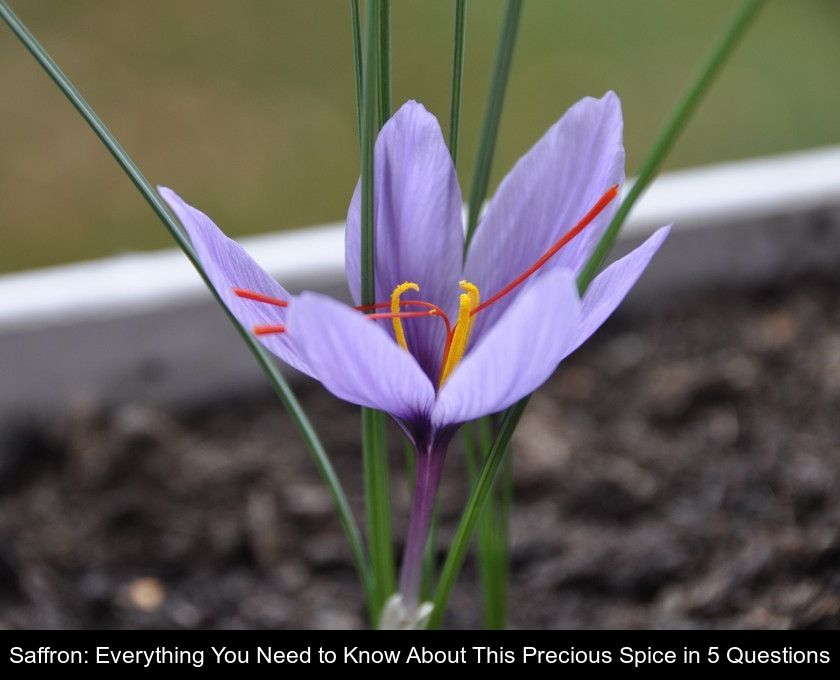Saffron: Everything You Need To Know About This Precious Spice In 5 Questions
Saffron, which has been cultivated in Europe since the Middle Ages, is a spice originating from the Middle East. It comes in the form of precious blood-red filaments produced by the flowers of Crocus sativus. These bulbs can be planted at the end of summer to harvest the flower pistils in October. We invite you to discover the world's most expensive spice in 5 questions.
1- Which flower produces saffron?
Saffron is a spice that comes from a flower in the Crocus family: Crocus Sativus.
Each flower has three red stigmas that are twenty-five to thirty millimeters long. It is by harvesting and drying the stigmas of this flower that this precious spice is obtained.
2- Why is saffron so expensive?
With a price approaching 10,000 euros per kilo, saffron is the most expensive spice in the world, ahead of vanilla. It is often sold in capsules of 0.3 or 0.5 grams to reduce its selling price.
It is from October that the pistils are harvested by hand. The harvest takes place every morning for about a month, and the importance of manual labor justifies the high price of this spice.
Indeed, it takes the pistils of an average of 150,000 flowers to produce 1 kg of saffron! During drying, the filaments of crocus sativus lose 4/5 of their weight.
3- What is the history of saffron?
The name "saffron" comes from the Arab-Persian word za’faran, which refers to the color yellow.
This spice has been produced and used in cooking since ancient times. It is part of culinary traditions all over the world. The main producing countries during antiquity (Iran, Spain, India, and Greece) still dominate the global market today.
This spice was once used as a medicinal plant to treat a wide range of ailments, from indigestion to smallpox, including respiratory diseases...
Its yellow-orange color was also traditionally used to dye fabrics, especially the robes of Hindu and Buddhist monks.
4- How to grow saffron?
Planting and growing Crocus sativus yourself is a good way to obtain this spice at a lower cost.
Saffron crocus is planted at the end of summer for a harvest of its precious pistils as early as October. This bulb grows and blooms in just a few weeks. It prefers neutral, light, well-drained soils rich in organic matter.
100 bulbs produce about 1 g of saffron in the year they are planted and a bit more in subsequent years. This may seem like a meager harvest, but in reality, to flavor a dish, 2 pistils per person are enough...
After harvesting, the filaments must be dried and then stored in a cool, dark place.
5- How to use saffron in cooking?
Saffron is used in cooking as a seasoning and coloring to give dishes and sauces a beautiful golden-yellow color.
This spice contains more than 150 volatile and aromatic compounds that give it exceptional aromatic qualities. It owes most of its aroma to safranal (a volatile oil).
This spice is marketed in two forms: filaments and small doses of powder. On average, one dose is needed for a dish intended for 4 to 6 people.
Note: while powdered spice is added directly to dishes, saffron filaments must macerate in a little boiling water for at least 24 hours to fully express their flavor.
You can then add them to your savory preparations (such as bouillabaisse, paella, or chicken tagine) or sweet ones, as saffron is also used in cakes and desserts!








